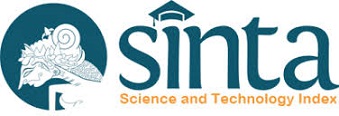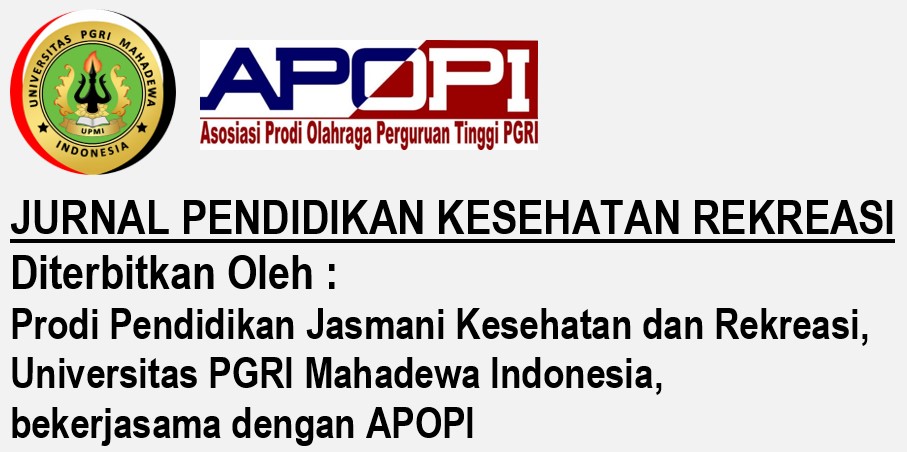Kepatuhan terhadap Pedoman Aktivitas Fisik WHO pada Anak Usia Dini : Evaluasi dengan Metode Machine learning
DOI:
https://doi.org/10.59672/jpkr.v10i1.3490Keywords:
artificial intelligence, gaya hidup aktif, perilaku sedentariAbstract
Studi ini berupaya untuk mengevaluasi dan mengukur tingkat aktivitas fisik anak usia dini sejalan dengan pedoman Organisasi Kesehatan Dunia (WHO), menggunakan teknik klasifikasi machine learning pada data yang diperoleh dari kuesioner. Menyadari pentingnya aktivitas fisik di tahun-tahun formatif, penelitian ini bertujuan untuk menilai kepatuhan terhadap ambang batas aktivitas yang direkomendasikan WHO pada anak usia dini. Metodologi ini mengintegrasikan kuesioner komprehensif yang mengungkap beragam aspek pola aktivitas fisik anak usia dini, yang mencakup durasi, intensitas, dan jenis aktivitas yang dilakukan dalam berbagai situasi. Sebanyak 99 orang tua siswa melaporkan aktivitas keseharian anak mereka yang berusia 4 sampai 5 tahun (M = 4,59±0,41). Dengan memanfaatkan model klasifikasi algoritma machine learning decision tree, penelitian ini memproses data yang dikumpulkan untuk membedakan pola dan mengklasifikasikan tingkat aktivitas berdasarkan kriteria WHO. Hasilnya menunjukkan, indikator waktu aktivitas, waktu tidur dan waktu bermain menjadi indikator penentu decision tree dalam mengklasifikasi kepatuhan anak usia dini terhadap rekomendasi aktivitas fisik WHO. Lebih lanjut, machine learning decision tree sangat efektif dalam mengevaluasi dan mengklasifikasikan kepatuhan aktivitas fisik anak usia dini dengan performa akurasi 90%. Efektivitas pendekatan machine learning decision tree dalam mengevaluasi dan mengkategorikan tingkat aktivitas fisik anak usia dini secara akurat, menyoroti bidang-bidang potensial untuk intervensi dan strategi yang ditargetkan untuk meningkatkan kepatuhan terhadap aktivitas fisik yang direkomendasikan oleh WHO. Metodologi ini menawarkan instrumen yang menjanjikan bagi para profesional kesehatan, pembuat kebijakan, dan pendidik untuk lebih memahami dan mengatasi perilaku aktivitas fisik anak usia dini, sehingga berkontribusi terhadap promosi gaya hidup sehat sejak usia dini.
Downloads
References
Al Sagr, N. A., & Al Sagr, A. N. (2020). The effect of electronics on the growth and development of young children : A Narrative Review. Journal of Health Informatics in Developing Countries, 14(1), 1–13. https://jhidc.org/index.php/jhidc/article/view/250
Alsareii, S. A., Awais, M., Alamri, A. M., AlAsmari, M. Y., Irfan, M., Aslam, N., & Raza, M. (2022). Physical activity monitoring and classification using machine learning techniques. Life, 12(8), 1103. https://doi.org/10.3390/life12081103
Aznar, S., Queralt, A., García-Massó, X., Villarrasa-Sapiña, I., & Molina-García, J. (2018). Multifactorial combinations predicting active vs inactive stages of change for physical activity in adolescents considering built environment and psychosocial factors: a classification tree approach. Health & Place, 53, 150-154. https://doi.org/10.1016/j.healthplace.2018.08.001
Batta, M. (2018). Machine learning Algorithms - A Review. International Journal of Science and Research (IJSR), 18(8), 381–386. https://doi.org/10.21275/ART20203995
Biddle, S. J. H., Gorely, T., & Stensel, D. J. (2004). Health-enhancing physical activity and sedentary behaviour in children and adolescents. Journal of Sports Sciences, 22(8), 679–701. https://doi.org/10.1080/02640410410001712412
Christensen, R., & Knezek, G. (2002). Assessing the Impact of Technology in Education. Computers in the Schools, 18(2), 5–25. https://doi.org/10.1300/J025v18n02
Garcia-Chimeno, Y., Garcia-Zapirain, B., Gomez-Beldarrain, M., Fernandez-Ruanova, B., & Garcia-Monco, J. C. (2017). Automatic migraine classification via feature selection committee and machine learning techniques over imaging and questionnaire data. BMC Medical Informatics and Decision Making, 17(1), 1–10. https://doi.org/10.1186/s12911-017-0434-4
Hatch, K. E. (2011). Determining the Effects of Technology on Children" Senior Honors Projects. The University of Rhode Island
Horvitz, E., & Mulligan, D. (2015). Machine learning: Trends,perspectives, and prospects. Science, 349(6245), 253–255. https://doi.org/10.1126/science.aaa8415
Kale, D. C., & Rey, M. Del. (2017). T He E Ffectiveness of T Ransfer L Earning. Iclr2018, 5(May), 1–4.
Lamb, K. L., & Brodie, D. A. (1990). The Assessment of Physical Activity by Leisure-Time Physical Activity Questionnaires. Sports Medicine, 10(3), 159–180. https://doi.org/10.2165/00007256-199010030-00003
Lima, A. N., Philot, E. A., Trossini, G. H. G., Scott, L. P. B., Maltarollo, V. G., & Honorio, K. M. (2016). Use of machine learning approaches for novel drug discovery. Expert Opinion on Drug Discovery, 11(3), 225–239. https://doi.org/10.1517/17460441.2016.1146250
Maswadi, K., Ghani, N. A., Hamid, S., & Rasheed, M. B. (2021). Human activity classification using Decision Tree and Naive Bayes classifiers. Multimedia Tools and Applications, 80, 21709-21726. https://doi.org/10.1007/s11042-020-10447-x
Mesanza, A. B., Lucas, S., Zubizarreta, A., Cabanes, I., Portillo, E., & Rodriguez-Larrad, A. (2020). A machine learning approach to perform physical activity classification using a sensorized crutch tip. IEEE Access, 8, 210023-210034. https://doi.org/10.1109/ACCESS.2020.3039885
Mirza, R. (2017). Memaksimalkan Dukungan Keluarga Guna Meningkatkan Kualitas Hidup Pasien Diabetes Mellitus. Jurnal JUMANTIK, 2(2), 12–30. http://dx.doi.org/10.30829/jumantik.v2i2.1122
Okely, A. D., Kariippanon, K. E., Guan, H., Taylor, E. K., Suesse, T., Cross, P. L., & Draper, C. E. (2021). Global effect of COVID-19 pandemic on physical activity, sedentary behaviour and sleep among 3-to 5-year-old children: a longitudinal study of 14 countries. BMC Public Health, 21, 1-15. https://doi.org/10.1186/s12889-021-10852-3
Sheng, B., Moosman, O. M., Del Pozo-Cruz, B., Del Pozo-Cruz, J., Alfonso-Rosa, R. M., & Zhang, Y. (2020). A comparison of different machine learning algorithms, types and placements of activity monitors for physical activity classification. Measurement, 154, 107480. https://doi.org/10.1016/j.measurement.2020.107480
WHO, Phisical Activity. (2022). WHO. https://www.who.int/news-room/fact-sheets/detail/physical-activity
World Health Organization. (2021). Standards for healthy eating, physical activity, sedentary behaviour and sleep in early childhood education and care settings: a toolkit. Geneva: World Health Organization; 2021. Licence: CC BY-NC-SA 3.0 IGO
Yati, R. (2023). Survei APJII Pengguna Internet di Indonesia. Bisnis.Com. https://teknologi.bisnis.com/read/20230308/101/1635219/survei-apjii-pengguna-internet-di-indonesia-tembus-215-juta-orang
Zhang, T., Fulk, G. D., Tang, W., & Sazonov, E. S. (2013). Using decision trees to measure activities in people with stroke. In 2013 35th Annual International Conference of the IEEE Engineering in Medicine and Biology Society (EMBC) (pp. 6337-6340). IEEE. https://doi.org/10.1109/EMBC.2013.6611003
Downloads
Published
How to Cite
Issue
Section
License
Copyright (c) 2024 Akhmad Faizal Ramdhan, Adang Suherman, Jajat , Kuston Sultoni, Imas Damayanti, Yati Ruhayati

This work is licensed under a Creative Commons Attribution-NonCommercial-ShareAlike 4.0 International License.
Jurnal Pendidikan Kesehatan Rekreasi is published under the terms of Creative Commons Attribution 4.0 International License / CC BY NC SA 4.0. This license permits others to copy, distribute, modify, and create derivative works for non-commercial purposes only


































